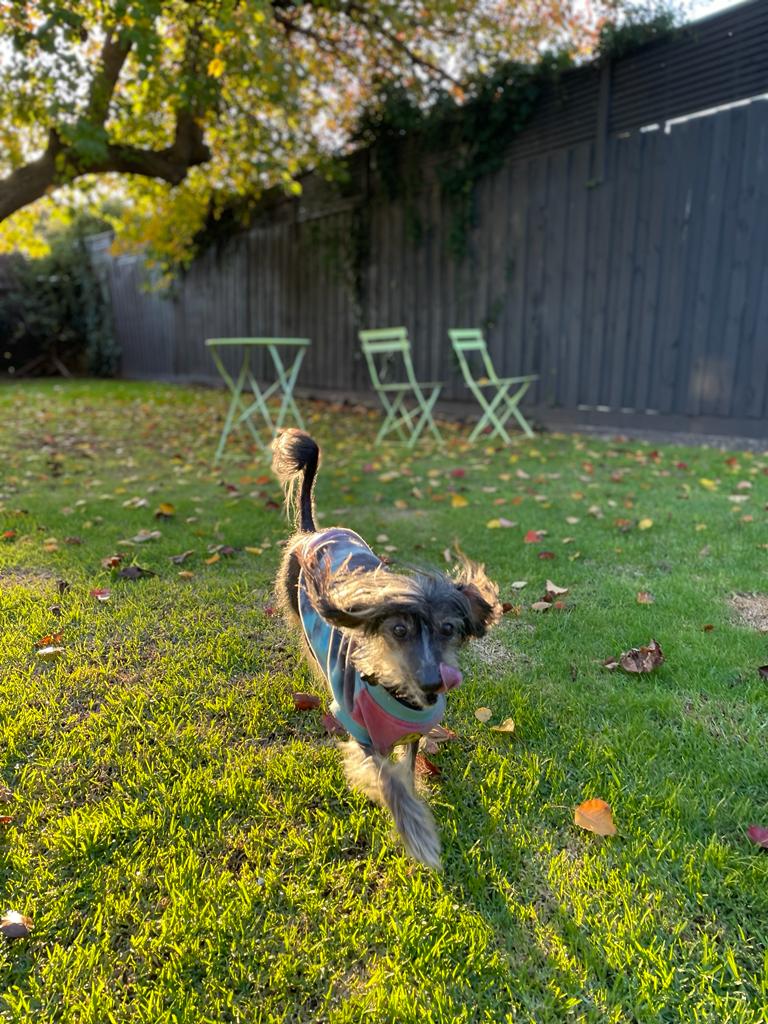Early in January my own dog, Pendlebury (14yr old Chinese Crested), had a stroke – needless to say scary for him and for me. Thanks to fast action from our Vets he has recovered almost completely, and with ongoing medication we hope to avoid recurrence. This event sent me on a steep learning curve, and it may be helpful to share what I have learned.
Causes –
While strokes in dogs are relatively rare compared to humans, they can occur. The causes of strokes in dogs are not always well-understood, and the signs may vary. Some potential causes include:
- Cerebral Infarction (Ischemic Stroke): This is the most common type of stroke in dogs. It occurs when there is a blockage in the blood vessels supplying the brain, leading to a lack of blood flow and oxygen. This blockage can be caused by a blood clot or other materials.
- Cerebral Hemorrhage (Hemorrhagic Stroke): This type of stroke happens when there is bleeding into the brain tissue. This can be caused by a ruptured blood vessel or other bleeding disorders.
- Underlying Health Conditions: including high blood pressure, heart disease, and certain blood clotting disorders.
- Brain Tumors.
- Kidney Disease.
- Severe head injuries or trauma.
- Inflammatory Conditions such as meningitis or encephalitis can affect the blood vessels in the brain, potentially leading to a stroke.
- Infectious Diseases.
- Thyroid Imbalances such as hypothyroidism or hyperthyroidism.
- Age and Breed Predisposition.
Symptoms –
Just like in humans, strokes in dogs can have diverse symptoms, and the severity can vary. In our case we first observed Pendlebury limping on his left side and walking in circles. Within minutes he was unable to use his left side at all, and lay curled around to the left. He had limited movement in his neck and his eyes roved around constantly. I have since learned that symptoms of a stroke in dogs may include:
- Sudden Loss of Balance or Coordination
- Circling when trying to walk
- Head Tilt, which can be a sign of a neurological issue, including stroke.
- Abnormal Eye Movements or Positioning
- Difficulty Swallowing or Excessive Drooling
- Altered Consciousness ranging from disorientation to unconsciousness
- Loss of Bladder or Bowel Control
- Sudden Behavioral Changes such as confusion, restlessness, or agitation.
It’s important to remember that these symptoms can also be caused by other health issues, so a prompt and accurate diagnosis by a veterinarian is crucial. Additionally, some conditions that mimic stroke symptoms may be treatable, and early intervention can improve the chances of a positive outcome.
Treatment –
Treatment for strokes in dogs may vary depending on the underlying cause and severity of the stroke. Common approaches may include:
- Emergency Care: If your dog is experiencing a stroke, it is important to get them to a veterinarian as quickly as possible. Emergency care may include stabilizing your dog, administering medications to control symptoms, and monitoring vital signs.
- Diagnostic Tests: The vet may perform various diagnostic tests, such as blood tests, imaging (such as MRI or CT scans), and neurological examinations to determine the cause and extent of the stroke.
- Medications: Depending on the underlying cause, the veterinarian may prescribe medications to manage symptoms, reduce inflammation, prevent blood clots, or address any other specific issues contributing to the stroke.
- Rehabilitation Therapy: In some cases, rehabilitation therapy may be recommended to help your dog regain strength and coordination. This may include physical therapy exercises tailored to your dog’s needs.
- Dietary Changes: The vet may suggest dietary modifications to address underlying health issues or to support overall health during the recovery process.
Our Vet believed Pendlebury’s stroke was caused by a blood clot, connected to his heart murmur. We opted not to have an MRI to confirm this due to his age and the expense, instead choosing medicinal treatment. So we were sent home with blood thinners to help his body move the suspected blood clot through, anti-nausea medications to help avoid any vomiting caused by his wobbly movements, and instructions to come back in 3 days if nothing changed as we may have to make ‘the decision’.
I am pleased to report that symptoms began to improve within a couple of hours, and Pendlebury was almost completely recovered within a few days. Today his left side is still a little weak, especially when he is tired, and he will remain on blood thinners for the rest of his life as a preventative measure. But he is otherwise a very happy little man! Fast action gave him the best chance of recovery, so if you suspect something is wrong with your dog seek Veterinarian treatment immediately.




